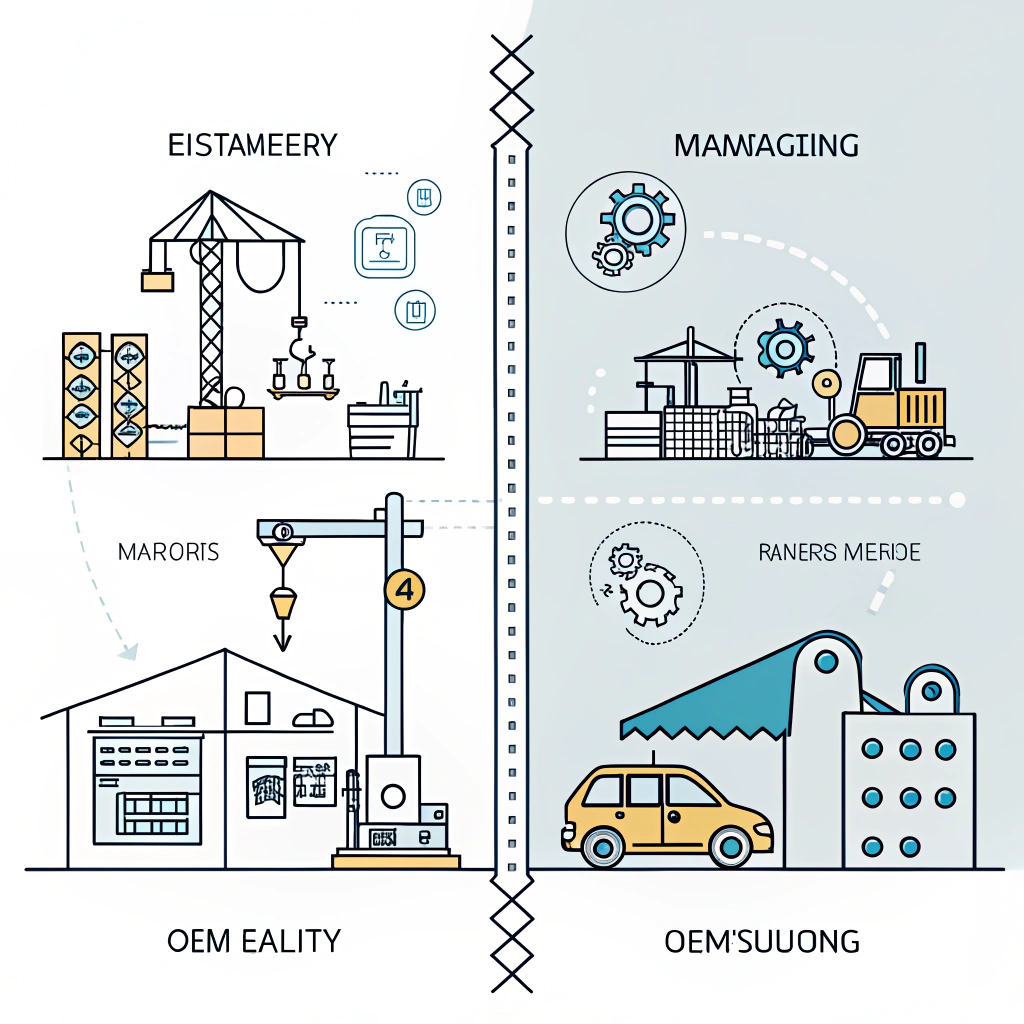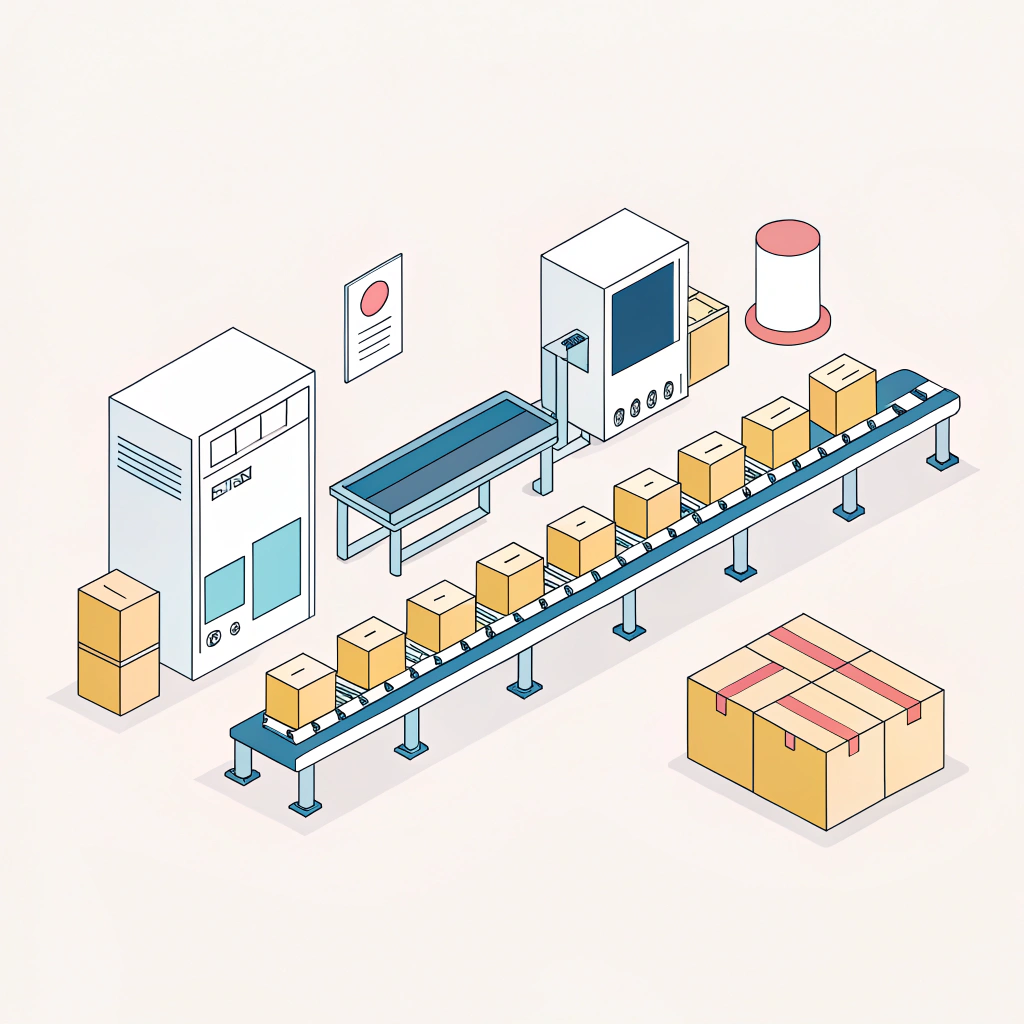Quick Answer: OEM manufacturing1 offers dedicated custom production, enhanced quality control, and scalability, making it ideal for businesses seeking to differentiate themselves with tailor-made pickleball paddles. In contrast, non-OEM sourcing2 may provide lower upfront costs but is often less flexible and harder to control regarding production consistency and innovation.
B2B decision makers in sports equipment distribution face a common dilemma: choosing between OEM manufacturing1 and non-OEM sourcing2 when procuring pickleball paddles. The choice directly affects product quality, cost, delivery timelines, and ultimately the competitive positioning in the market. For companies like NEX Pickleball—an industry-leading manufacturer specializing in high-performance paddles—this decision is pivotal. Let’s delve into both sourcing models to provide a concrete comparison that supports informed business decisions.
OEM manufacturing (Original Equipment Manufacturer) refers to a production model where a manufacturer produces products based on the buyer’s design, specifications, and quality requirements. This method allows distribution companies to offer products under their own brand while leveraging the manufacturing expertise and state-of-the-art technology of an established partner.
- Customization: OEM partners provide extensive customization options. Whether it is through selecting premium core materials (like Nomex Honeycomb Core, Polymer Honeycomb Core, or **Aluminum Honeycomb Core) or tailoring the paddle design via advanced techniques such as hot pressing, cold pressing, and thermoforming3, OEM manufacturing allows for unique product offerings that cater to specific market segments.
- Quality Control: Working directly with a trusted manufacturer like NEX Pickleball ensures tight quality control. Every step—from selecting high-grade materials such as 3K and 12K carbon fiber4, T300 for balanced performance, to using specialized production techniques—ensures consistency and precision in production.
- Scalability: OEM partners have proven capabilities for large-scale manufacturing, ensuring that as your business grows, production can easily ramp up to meet market demand.
- Technical Support and Expertise: OEM manufacturers offer technical consultations, leaning on factory experience and industry insights to continually refine the product design. This partnership not only improves product performance but also supports cost-effectiveness over time.
- Initial Investment: OEM production requires substantial capital for custom design trials and production setup.
- Longer Lead Times: Given the level of customization and detailed quality assurance steps involved, production cycles can be longer than standardized non-OEM sourcing2.
Non-OEM sourcing2 means acquiring finished products directly in the market, often produced by various manufacturers to meet generic specifications. This model can be advantageous for businesses looking for quick procurement without investing heavily in design customizations.
- Cost Efficiency: For companies that need a fast turnaround and are content with less customization, non-OEM sourcing can be cheaper due to reduced custom design and production trial costs.
- Shorter Time-to-Market: Products can typically be acquired faster as they are produced in standardized batches without the additional time required for customization.
- Simplicity: The procurement process is straightforward, reducing complexity in order placement and inventory management.
- Limited Customization: Non-OEM products come with preset designs and specifications that may not fully satisfy niche market needs or brand identity requirements.
- Quality Variability: The quality of finished products may vary, and there is less control over production processes such as poly composite formulation or thermoplastic treatments. This poses risks for maintaining a premium brand image.
- Scalability Concerns: Manufacturers not fully aligned with your quality benchmarks may struggle to deliver consistent performance in bulk orders.
To clearly outline the contrasts between these two sourcing models, the following table summarizes the core differences:
| Factor | OEM Manufacturing | Non-OEM Sourcing |
|---|---|---|
| Customization | High – Tailored to client-specific requirements; customizable designs (e.g., paddle weight, grip size, material composition) | Low – Standard designs with limited modification options |
| Quality Control | Excellent – Direct oversight on materials (3K, 12K, T300 carbon fiber4, fiberglass, composite cores) and production processes (hot pressing, cold pressing, thermoforming3) | Variable – Dependent on the market supplier’s quality standards |
| Scalability | High – Production processes are designed for both small-scale custom orders and large-scale mass production | Moderate – Easier to source quickly but may face limitations in quality consistency |
| Production Timeline | Longer – Due to design customization and thorough testing cycles | Shorter – Pre-made products available on demand |
| Cost Structure | Initially higher – Due to investment in custom tooling and quality assurance; long-term benefits include brand differentiation and higher market value | Lower upfront costs – Cheaper and faster production, but may compromise longevity and performance |
| Technical Support & Expertise | Direct – OEM partners offer comprehensive technical support, consultative design modifications, and production process insights | Limited – Customer relies on market specifications and post-purchase support |
Manufacturers with OEM manufacturing1 capabilities offer a competitive edge by allowing a business to develop a unique product lineup that stands out in the crowded sporting goods market. With OEM manufacturing, companies can incorporate advanced production techniques and materials. Consider the following aspects:
- Enhanced Performance: Leveraging methods like hot pressing, cold pressing, and thermoforming3, OEM manufacturers provide paddles that are designed for optimal performance. This not only caters to professional athletes but also aligns with consumer expectations in recreational play.
- Brand Differentiation: Premium materials, including various forms of carbon fiber4 and composite materials, allow for superior product strength, responsiveness, and durability. This differentiation is critical in a market where performance and longevity are key purchasing factors.
- Long-Term Partnerships: With an OEM model, companies enjoy a strategic alliance that goes beyond mere procurement. Continuous feedback loops and quality control measures ensure that the product evolves with market trends and technological innovations. NEX Pickleball, for example, utilizes a dynamic production process that can swiftly implement innovations while maintaining rigorous quality standards.
While non-OEM sourcing2 can offer short-term wins in cost and speed, the lack of flexibility might be detrimental in the long term. Product homogeneity may lead to reduced brand value and higher competition with similar-looking products. Moreover, any quality deviations—stemming from less rigorous oversight—could adversely affect customer satisfaction and ultimately market share.
For businesses aiming to elevate their brand with premium, high-performance pickleball paddles, OEM manufacturing emerges as a long-term strategic investment. On the other hand, if immediate cost savings and faster turnaround times are the primary objectives, non-OEM sourcing might be more appealing. However, the trade-off often manifests in reduced product uniqueness and potentially inconsistent quality control. Decision makers must weigh their priorities: are customization and quality worth the initial investment?
NEX Pickleball stands as a testament to the benefits of OEM manufacturing. With advanced production techniques and a meticulous approach to quality control, we have successfully partnered with brands like Joola and Selkirk. Here’s what sets us apart:
- Advanced Production Techniques: Our manufacturing methods, including hot pressing, cold pressing, and thermoforming3, have been optimized for both performance and durability. Each method is selected based on the paddle’s design requirements to ensure an impeccable finish.
- Material Versatility: By utilizing a range of materials—from various grades of carbon fiber4 to fiberglass and composite cores—we can tailor our products to meet the exact needs of our B2B partners. This versatility allows for paddles that not only perform at the highest level on court but also embody the brand ethos of our clients.
- Quality and Consistency: Every paddle undergoes rigorous testing to ensure that it meets performance benchmarks and durability standards. This commitment to quality ensures that our partners can confidently offer products that resonate with both competitive players and recreational enthusiasts.
- Customization at Scale: Our OEM model supports both low-volume, highly customized orders and large-scale productions without sacrificing product consistency—a critical factor for businesses looking to position themselves as market leaders.
These advantages make NEX Pickleball an optimal choice for B2B partners looking for a reliable OEM manufacturer that understands market trends and technological advancements. The strength of our OEM model is evident in our ability to deliver products that not only meet but exceed industry standards.
When choosing between OEM manufacturing1 and non-OEM sourcing2 for pickleball paddles, it is crucial to assess your business objectives, the importance of product differentiation, and long-term quality expectations. OEM manufacturing, with its emphasis on customization, quality, and scalability, might be the strategic partner you need to stand out in a competitive market. For businesses willing to invest in design and production innovation, the benefits of OEM manufacturing extend beyond immediate costs to deliver enhanced market positioning and customer loyalty.
B2B decision makers should engage in detailed consultations with potential OEM partners, request comprehensive production samples, and review quality assurance processes to ensure their chosen model aligns with their business objectives. In today’s competitive environment, aligning your product strategy with a manufacturer that understands both the technical and strategic aspects of production is key to sustainable growth.
We invite you to reach out for a tailored consultation to explore how OEM manufacturing can empower your brand. Our team at NEX Pickleball is ready to provide further insights into how our expertise in advanced manufacturing techniques can support your goals.
People Also Ask
Q: What are the main benefits of OEM manufacturing for pickleball paddles?
A: OEM manufacturing offers extensive customization, precise quality control through advanced production techniques, and scalability to meet both small and large order demands, ultimately providing products that are tailored for performance and brand differentiation.
Q: How do production processes like hot pressing, cold pressing, and thermoforming3 impact paddle quality?
A: These production processes each offer unique advantages—for example, hot pressing enhances strength and impact resistance, cold pressing ensures precise control and material integrity, and thermoforming allows for intricate design and uniform material distribution. Together, they optimize paddle performance based on specific design requirements.
Q: Why might businesses choose non-OEM sourcing2 instead of an OEM partner?
A: Businesses may opt for non-OEM sourcing for its lower initial costs and faster time-to-market. However, this can limit customization and introduce quality variability, which may affect long-term brand differentiation and customer satisfaction.
-
OEM manufacturing: Reading the linked article will provide insights into partnering with Original Equipment Manufacturers to achieve tailored production solutions, strict quality control, and scalable operations to support business growth. Back ↩ ↩2 ↩3 ↩4
-
Non-OEM sourcing: Explore the nuances between standardized product procurement and custom manufacturing, including cost efficiencies, production timelines, and the impact on product differentiation. Back ↩ ↩2 ↩3 ↩4 ↩5 ↩6 ↩7
-
Thermoforming: Learn how thermoforming technology shapes materials through controlled heat and pressure to produce intricate designs and consistent product quality in manufacturing. Back ↩ ↩2 ↩3 ↩4 ↩5
-
Carbon fiber: Discover the benefits of using carbon fiber in production, including its lightweight strength and durability, which are critical for high-performance products. Back ↩ ↩2 ↩3 ↩4







